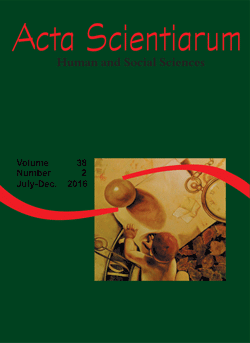<b>A spatial analysis of employment in Rio Grande do Norte clothing sector (2004 and 2014)
Abstract
This study aimed to analyze the impact of horizontal clustering in employment growth of micro-, small and medium companies (MPME´S) of the clothing industry in the state of Rio Grande do Norte, in 2004 and 2014. In this context, it was considered the arguments grounded by Fujita and Thisse (2002) that point to external economies as an explanation of clustering. In terms of methodology, the research was developed through Exploratory Analysis of spatial data (ESDA), highlighting the spatial autocorrelation statistics Moran’s I and Local Moran’s and used the model proposed by Fingleton, Igliori and Moore (2005) with the procedure based on the model of Two-Stage Least Squares (2SLS). The results showed that, for the clothing sector of the stage of Rio Grande do Norte, for the period 2004 -2014, horizontal clustering generated positive externalities on growth of employment in (MPME´S) in this sector, but these are balanced with negative impacts, also known as congestion effect.
Downloads
DECLARATION OF ORIGINALITY AND COPYRIGHTS
I Declare that current article is original and has not been submitted for publication, in part or in whole, to any other national or international journal.
The copyrights belong exclusively to the authors. Published content is licensed under Creative Commons Attribution 4.0 (CC BY 4.0) guidelines, which allows sharing (copy and distribution of the material in any medium or format) and adaptation (remix, transform, and build upon the material) for any purpose, even commercially, under the terms of attribution.
Read this link for further information on how to use CC BY 4.0 properly.























